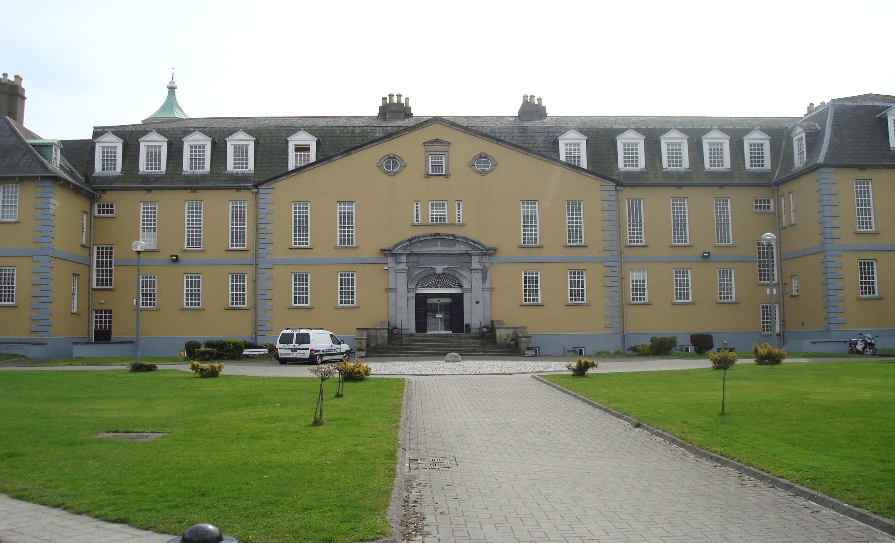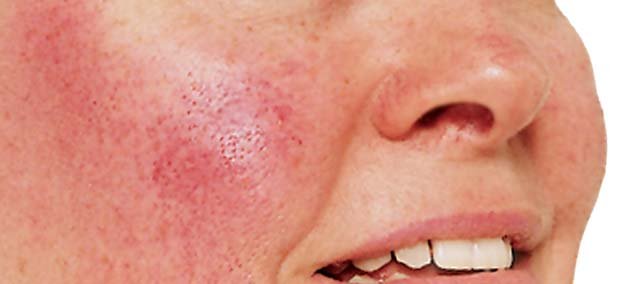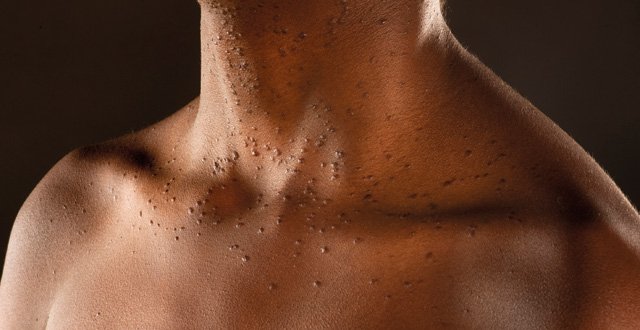<h3 class=”HeadC20MIstyles”>Some physicians staying abroad is ‘the price we pay’ for top-class Irish cardiologists — new ICS President</h3>
The incoming Irish Cardiac Society (ICS) President Dr Jim Crowley has said that the chance that cardiologists in training may not return to Ireland is “the price we pay” for the high levels of expertise among Irish cardiologists.
Speaking to the <strong><em>Medical Independent</em></strong> (<strong><em>MI</em></strong>) at the recent Irish Cardiac Society Annual Scientific Meeting and AGM in Galway, Dr Crowley explained that while some cardiologists who travel abroad in their final two years of training may decide not to come back to Ireland, this is a necessary risk to allow the cardiologists of the future to provide the best services for Irish patients.
“Almost every one of our trainees ends up going to world-class centres abroad in the last two years of their training,” he said. “When they are trained, they have developed the expertise that we hope they will bring back to Ireland. Many of them do come back; some of them remain in other countries, but that is the price we pay for getting people of such excellent quality coming home and bringing back the superb skills that they acquire.”
This system has a significant positive knock-on effect for the Irish health service as a whole, he explained. “A lot of the growth and the advances in cardiology in Ireland have come from these trainees bringing back what they have seen and learned abroad in these world-class centres and insisting on developments occurring in Ireland, which makes sure the general population is treated with the best techniques and technologies,” he told <strong><em>MI</em></strong>.
Describing trainee placements as a “double-edged sword”, he continued: “Ireland is a very small country… we want our trainees to learn in the best centres in the world. We find that the feedback we get from these centres — I am one of the trainers myself — is that they are delighted with the Irish [trainees] that they receive and they say that the training the Irish people have received in basic cardiology and management is top class, so they are also very happy to take them in.”
The risk is that the centres abroad will want to hire Irish trainees as consultants. Yet many Irish cardiologists retain a desire to return home, especially to the larger care centres, said Dr Crowley. “However, in some of the facilities that are not tertiary referral centres, it can be difficult to come back to those centres because they have been trained to such a high level; we may need to look at that in terms of modifying the training programmes.”
Dr Crowley said that for the next two years of his tenure as President, among his priorities will be to maintain the momentum the ICS has built up and to expand contacts at international level with organisations abroad, particularly with the European Society of Cardiology and the American College of Cardiology, among others. “We already have close relationships with these bodies and these must continue to be fostered,” he said. “Many of the representatives from these societies want to come to our meetings. We must also continue to foster developments for our trainees.”
In terms of the ICS’s prestige internationally, he lauded outgoing President Dr Albert McNeill for his work in this area: “He has been a great ambassador for the ICS abroad. This is a very important role for the President and it helps to improve access for trainees to centres abroad, which is very important for them.”
<h3 class=”HeadC20MIstyles”>Meeting hears ‘sobering overview’ of cardiac imaging in Ireland</h3>
A presentation at the recent Irish Cardiac Society (ICS) Annual Scientific Meeting and AGM provided a thought-provoking overview of the provision of cardiac imaging in Ireland and how this aspect of care faces multiple deficits.
Dr Caroline Daly, Cardiologist at St James’s Hospital, Dublin, told attendees that there is an “unmet need” in this field, in particular ECHO, cardiac CT and cardiac MRI, where there are “the greatest gaps in our service that we need to fill,” Dr Daly told the conference.
“We need to look at what is required in providing these services, such as the equipment — part of the problem is the initial installation cost; ECHO is obviously relatively cheap compared to CT or cardiac MRI, but nonetheless it requires a robust system of image storage, analysis and reporting software, which needs to be updated and maintained as time goes on,” said Dr Daly.
“We must also consider that the digital storage management systems involved in having a comprehensive solution for your cardiac imaging needs are costly. Furthermore, you need technical staff, and that is perhaps an issue that we are really grappling with at the moment in terms of sonographers and specialist radiographers — certainly in Dublin, it has been apparent that a relatively limited number of graduates from Kevin Street [Dublin Institute of Technology] over the last number of years have chosen cardiology as their subspecialist area of interest; they have perhaps chosen respiratory clinical measurement or urology, and that has made it difficult to create a new ‘pool’ of sonographers providing ECHO services,” according to Dr Daly.
She said that last year, some cardiac units “almost ground to a halt” because of the limited number of radiographers and the delays in having trained radiographers accredited with their respective professional bodies. “And that’s before we even get to the issue of cardiologists and the radiologists, and how they communicate with each other,” she added.
Dr Daly referred to the lack of data to accurately assess the specific gaps in ECHO services, despite the best efforts of the Irish Heart Foundation and ICS. However, she cited services in the UK as providing the best statements on what the optimal service should be.
Dr Daly told the attendees that based on a 1995 report, it was estimated that between 42,000-to-47,000 transgraphic ECHOs were required per million population in Ireland per annum, and around 2,000 per million population of transesophageal echocardiograms were required.
“With some ‘back-of-an-envelope’ calculations, I would say we are doing between — generously — one-half, and less generously one-tenth, of those numbers per million population,” Dr Daly told the attendees. “In terms of staffing levels, that report suggested we should have about 30 stenographers per million population; we certainly don’t have that in Ireland, even if you combine public and private sectors. Consultants specialising in ECHO — 10-to-13 per million population [was recommended]; again, we are nowhere near that.”
She pointed to the paradox that waiting times are actually higher in regions where there are more sonographers and higher throughputs, which reflects the differences in unmet demand.
“So you won’t have a waiting list if the referrers don’t know what the service is or what they can expect to have from it,” she said. “So paradoxically, there is such an unmet demand for ECHO in places that are under-served, if you put more ECHO technicians in and put a service in place, you will actually initially have longer waiting lists until that backlog has been dealt with.”
Other factors that influence capacity and utilisation are demographics and appropriateness of referral, she added.
At the moment, there is an ongoing national review of specialist cardiac services in Ireland, which is focusing on acute cardiac syndromes, heart failure and cardiac arrhythmias, and “it is important that we include our imaging requirements [in the review] that pertain to all of these three,” said Dr Daly. “Imaging affects all of those, be it for structural heart disease, preparation for valve implantation, dealing with rare diseases, or cardiac risk in the young, so we really need to make the case strongly to that specialist review.”
The lack of services is probably greatest in CT and MRI, she said, and Dr Daly cited NIMIS as a source of data. “There are very small numbers there; obviously, that doesn’t include the private hospitals or certain centres… but the numbers are very small [in most of the NIMIS hospitals],” said Dr Daly, who also referred to NICE guidelines in 2016 that emphasised the need for cardiac CT and angiography as an initial test required for chest pain.
The SCOT-HEART study published this year also showed that early use of CT is useful in preventing myocardial infarctions by instituting earlier treatment. This leaves Ireland with “a great challenge ahead of us in providing this level of service for patients, but the data is there to show it is beneficial,” said Dr Daly.
“In Ireland, we have no dedicated cardiac MRIs in the public sector,” continued Dr Daly. “That excludes St Vincent’s and Cork, where they do have a cardiac MRI service, but the numbers in need of those services are so large that it would skew the data… we are saved slightly, in that there are active centres in the private sector and if possible, we can purchase on order a number of cardiac MRI for public patients… we have increased our numbers in St James’s Hospital but those numbers pale in comparison to what you would have if there was a dedicated magnet just doing only cardiac MRI, so we are always on the back-foot.”
Dr Daly concluded: “This is a very sobering overview of where we are with cardiac MRI services… our numbers need to be developed — and rapidly.”
<h3 class=”HeadC20MIstyles”>Reducing the risk of cardiovascular disease by lowering lipids</h3>
The recent Irish Cardiac Society (ICS) Annual Scientific Meeting and AGM heard from Prof Chris Packard, Professor of Vascular Biochemistry and Senior Research Fellow at the University of Glasgow, UK, who addressed the attendees on the topic ‘Horizons in Lipid-Lowering Therapy’.
Prof Packard traced the history of lipid therapy, where “we have seen fashions come and go. He stated: “Just last week, we got some results from the REDUCE-IT study in triglyceride-lowering [therapy]… after several somewhat depressing years of HDL-raising trials, the horizon actually looks quite nice at the moment; the vista is very good.”
He asked the conference: “LDL cholesterol and its association with atherosclerosis — are we in the end-game; have we reached the end of that story? And if that’s the case, what are the new targets and therapeutic approaches that we can look forward to in the next five-to-10 years to give cardiologists new tools in preventing coronary disease?”
He told the attendees that there is a coalescence of evidence to show that LDL cholesterol is the “smoking gun” in the development of atherosclerosis. He pointed out: “Where it [cholesterol] goes is important; it can end up in the wrong places, such as in the artery wall, where it can build up for decades.
“Lipid-lowering is like blood pressure-lowering — there’s a host of evidence to support our use of drugs and there are some exciting genomic findings that give us extra therapeutic potential,” he said, displaying slides to illustrate progression lines to the conference. “The trials tell us that if you reduce LDL by 1mmol/l, you reduce cardiovascular disease risk by 22 per cent. That’s a good rule of thumb — if you are sitting with a patient and you see the lab result come back 1mmol/l lower, that patient is better off; a 2mmol/l reduction will reduce the risk by approximately 40 per cent, and so it goes on.”
Prof Packard explained that there are between 30 and 40 genes that affect LDL — such as PCSK9, apolipoprotein B and sortilin — and these are the “strongest markers”, he said. “When you look at these genes and know that they lower LDL cholesterol, and if you have one variant that lowers LDL compared to another variant that raises it, you then look at the cholesterol-lowering variant and the risk in people who have that variant — you know their risk [of cardiovascular disease] is lower,” said Prof Packard. “This is part of the genetic underpinning for the causation of LDL cholesterol and atherosclerosis. If a person has a disease like familial hypercholesterolaemia (FH), the risk goes up manifold.”
Prof Packard presented a range of data and slides to illustrate that regardless of the genetic risk factors for raised LDL cholesterol, if a reduction is achieved, genetically or pharmacologically, a similar risk reduction is also observed. “However, if you have the right genetics, a 1mmol/l drop in LDL from birth gives you a 54 per cent risk reduction. The earlier we can lower the LDL, the bigger the impact on risk.”
With regard to treatment strategies in clinical practice, Prof Packard told the conference: “PCSK9 inhibitors are now being widely used for secondary prevention… for a PCSK9 inhibitor, you need to have a high risk to qualify for their use and it is now being used more and more. In some countries, it is only used for FH, but in other countries, it can be used in high-risk individuals and these people get a benefit, as shown by the analysis in the FOURIER trial in those who have had multiple events, those who have had a recent myocardial infarction, patients with peripheral artery disease, with multi-vessel disease and patients with diabetes… you get big risk reductions, small numbers needed to treat, and therefore you are moving into a cost-effective scenario with regard to the use of PCSK9 inhibitors.”
He concluded by telling the attendees that “profound risk reduction” is possible with little or no risk to the patient and it is important to consider LDL exposure in terms of how long LDL has been at a certain level. Knowing this will enable a strategy for primary prevention, he said. “Better genetics and biomarkers will be the clue to more intelligent primary and secondary prevention and more effective lipid-lowering,” he summarised.
<h3 class=”HeadC20MIstyles”>Study on AF wins Young Investigator Award</h3>
The prestigious Brian Maurer Young Investigator Award, presented at the recent Irish Cardiac Society Annual Scientific Meeting and AGM in Galway, was won by Dr Alan Hanley — who recently received his certificate of satisfactory completion of specialist training — for his presentation titled ‘The Role of ZFHX3 in Atrial Fibrillation (AF).
Dr Hanley and colleagues sought to identify the role of ZFHX3 in the pathophysiology of AF and hypothesised that cardiac-restricted knock-down of this gene in a mammalian model organism would perturb normal cardiac development and function, and illuminate the role of ZFHX3 in AF.
Knock-down was confirmed by organ specific genotyping, said Dr Hanley, and among the study mice, increased inducibility of atrial arrhythmias was observed at in vivo electrophysiology testing when the mice were three months old.
Cardiac structure and function was normal in the knock-down mice at three months, the researchers observed, and premature mortality was noted. MRI revealed severe cardiomyopathy prior to death, with impaired left ventricular function and atrial enlargement. The histology of the affected hearts revealed severely dilated and fibrosed atria containing a large mass consistent with thrombus, the team reported.
Immunofluorescence of mouse hearts from early embryonic to adult stages confirmed cardiac expression of ZFHX3, with a marked atrial predominance, Dr Hanley told the conference.
In his conclusion, Dr Hanley explained: “We have uncovered a role for ZFHX3 in the left-right patterning of cardiac atria. Disruption of this developmental process predisposes to atrial cardiomyopathy, affects atrial electrophysiology properties, and may lead to AF.”
<h3 class=”HeadC20MIstyles”>The history and contributions to treatment of arrhythmias and syncope</h3>
The Irish Cardiac Society (ICS) Annual Stokes Lecture was this year delivered by Dr Janet McComb, Consultant Cardiologist at the Freeman Hospital in Newcastle, UK, on the topic of ‘Stokes, Adams, Ward and Many Others: Arrhythmias and Syncope’. Dr McComb’s talk was warmly received by delegates, who heard about the historical importance of the work of Prof Robert Adams, a pioneering surgeon in the 1800s, and she presented a number of case studies to illustrate the treatment methodologies at that time.
Dr McComb also outlined some of the work of Prof William Stokes, including historical case studies in patients with recurrent syncope and suspicious cardiac pathologies that, even at that time, “presented red-flags for cardiovascular disease,” Dr McComb told the packed auditorium. This early work formed the genesis of diagnostic criteria for Stokes-Adams Disease, she told the attendees.
She also provided a brief outline of the work of Prof Conor Ward, who made many significant contributions to the field of paediatric cardiology. “Prof Ward was called ‘an irrepressible advocate for patients’, which I think is a lovely and fitting tribute and must be one of the highest compliments that can be given in medicine,” Dr McComb told the meeting.
She also outlined the early diagnostic and trial-and-error nature of historical pharmacological treatments for arrhythmias and syncope and the early identification of familial syndromes.
“Adams attacks were originally described as attacks of recurrent syncope with little or no warning, possible injury, quick recovery and profound bradycardia. AV [atrioventricular] block was shown and that was assumed to be the only mechanism. Subsequently, however, other arrhythmias — particularly sinus arrest, self-terminating ventricular tachycardia and/or fibrillation — were shown to cause identical symptoms,” she explained.
Dr McComb also traced the development of early pacemaker implantation and displayed the large size and cumbersome nature of these devices, which presented unique challenges to cardiologists at the time of their introduction, and the learning process for physicians implanting them. Dr McComb herself, who trained in Belfast, was one of the physicians who pioneered the use of these devices.
“The original description of Stokes-Adams attacks — made by Stokes, and before him Adams, and before him others almost 200 years ago — still stands,” Dr McComb concluded. “More recently, about 100 years ago, it was recognised that arrhythmias other than heart block can cause these attacks and whether we continue to call them ‘Stokes-Adams attacks’ or ‘arrhythmic syncope’, I don’t know. We shouldn’t just call them ‘cardiac syncope’, because obviously other things related to the heart, such as obstruction, can cause cardiac syncope.
“It is our role to teach and train those who treat patients with syncope to recognise cardiac syncope, and in particular arrhythmic syncope, and to encourage early referral for specialist advice to ensure equity of access to appropriate investigation and therapy.”
<h3 class=”HeadC20MIstyles”>Expertise without borders in cardiology</h3>
The International Session of the Irish Cardiac Society Scientific Meeting and AGM, held recently in Galway, heard lively and informative presentations from Dr C Michael Valentine of the American College of Cardiology; Prof Pepe Zamorano of the European Society of Cardiology; and Prof Nick Linker from the British Cardiovascular Society.
Dr Valentine presented a case study on ‘Secondary Prevention in Acute Cardiac Syndrome’. At the end of each presenter’s talk, attendees were invited to participate via an electronic voting system that allowed them to indicate what treatment course they would pursue for each patient in the case studies.
Dr Valentine’s case study focused on a 76-year-old patient with complex comorbidities, including permanent atrial fibrillation with rate control on oral anticoagulants, who recently suffered a small, non-Q wave myocardial infarction. She had received a long drug-eluting stent, had moderate diffuse disease in her right coronary artery descending from the left anterior descending artery, and was taking a number of different medications.
Following voting by participants, Dr Valentine explained that considering the patient’s particular circumstances and medications, ischaemia must be balanced against bleeding risk, which could be significantly reduced by removing one anticoagulant or antiplatelet therapy.
“The take-home message is, double-therapy leads to less bleeding than triple-therapy,” said Dr Valentine. “If you look at three different trials of almost 3,000 patients, there is no increased risk of stent thrombosis; you therefore have the ability to switch to double-therapy [from triple-therapy] with a fairly low risk, so triple-therapy should be kept as short as possible — at between one-to-six months. Use PPI [proton pump inhibitors] to protect against bleeding risk and after one year, stop all antiplatelet therapy and continue on oral anticoagulants with permanent atrial fibrillation in this patient.”
However, he added a cautionary note on depression in these patients. “There is a greater risk of depression after acute coronary syndrome,” said Dr Valentine. “It leads to lower compliance, worse outcomes, and screening results are uncertain for outcome improvements… we are now screening all of our patients in our clinics for depression and getting help for those who need it. It is leading to better medications compliance.”
He urged the attendees to consider depression screening in heart failure patients and for those in difficult social circumstances to improve medications compliance and enhance overall quality-of-life among this patient cohort.
Dr Zamorano presented the case of a 42-year-old male who was overweight, had hypertension, a history of tobacco use, had undergone a cobalt prosthetic hip replacement, and had a range of other comorbidities and risk factors for cardiovascular disease. He reported experiencing shortness of breath within the past two weeks. A further two weeks after presenting, the patient entered cardiogenic shock and developed acute heart failure with instability and extremely elevated levels of cobalt.
The cobalt-based hip prosthesis was removed and replaced with a ceramic one. Prominent, delayed enhancement in the lateral cardiac wall is very common in cases of cobalt cardiomyopathy, explained Dr Zamorano.
“ECHO definitely helps in such cases,” he told the attendees. “But don’t forget, ECHO has no brain — you will need to use your own in order to clearly identify the course of treatment in such cases.”
Dr Linker concluded the session by presenting the case of a patient for whom there is little trial data to support a treatment course and therefore, the attendees were challenged to use their clinical judgement alone. The patient was female, born in 1970, who experienced two brief instances of syncope in 1996 but was discharged from hospital. On further investigation, it was discovered that her father had an implantable cardiac device (ICD) inserted in 1992 after being diagnosed with idiopathic ventricular tachycardia fibrillation.
Following a complex treatment pathway for both the lady in the case study and her father, as well as thorough investigation of her family history, an electrophysiology study was conducted on the lady and Brugada syndrome was ruled out.
In 2001, the lady was asymptomatic but experienced two more instances of syncope and polymorphic complications and her examination made physicians more suspicious that Brugada syndrome may in fact be the correct diagnosis. Prof Linker then installed an ICD. “Bear in mind, people with ICDs still die from sudden cardiac death; there is still an incidence,” cautioned Prof Linker, “and people with channelopathies [such as Brugada syndrome] tend to die more frequently from sudden death related to ventricular arrhythmias. ICDs do not provide a guarantee for these patients.”
In 2005, the woman, who by that time had two children aged 12 and 13 years — one of whom was asymptomatic and both of whom had normal ECGs — visited Dr Linker and insisted that both children be fitted with ICDs. After he refused, he later received a letter from a paediatric cardiologist, asking him to assume care of the lady’s two children, who had by now been fitted with subpectoral ICDs without Dr Linker’s knowledge.
The lady is now symptom-free but Dr Linker said he is due to meet her to discuss a strategy to replace or repair a failing ICD lead, he explained. This may be complicated by the fact that the lady is petite and thin, with a small subclavian vein. “There is no right or wrong way to approach this ICD problem with the lead,” Dr Linker concluded. “A lot will depend on what the patient herself will want to do.”











Leave a Reply
You must be logged in to post a comment.